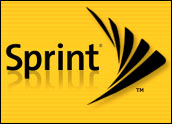
Sprint Nextel CEO Gary Forsee stepped down Monday amid mounting pressure from investors of the telecommunication company, which said it would launch a worldwide search for its next leader.
After days of rumors and published reports suggesting he was on the way out, Forsee announced he would leave the positions of chairman, CEO and president effective immediately.
Forsee has led Sprint Nextel since 2003, masterminded the US$36 billion takeover of Nextel in 2004, and over the past year had laid out a bold plan for the carrier that focused largely on investing up to $5 billion over the next decade to build out a massive WiMax high-speed wireless network.
‘The Right Time’
However, with large investors calling for change, the company’s board has been more concerned about the near term. Sprint has been growing much slower than its two main national rivals, Verizon and AT&T, adding relatively few new customers and even fewer of the monthly subscription sign-ups that help drive profit for wireless carriers.
“It is the right time to put in place new leadership to move the company forward in improving its performance and realizing corporate objectives,” Sprint’s board said in disclosing Forsee’s decision.
“The board’s search for selecting its next chief executive will focus on candidates outside the company,” said board member Irvine Hockaday. “We fully expect that the search will be concluded in a timely manner and we are focused on selecting the right candidate to guide the company to achieve its full potential. Sprint Nextel has the assets, spectrum, customer base and technology to be the leader in wireless mobility services.”
Forsee did not say what his plans were. Current CFO Paul Saleh will serve as Sprint’s CEO on an interim basis, the company said. Board member James Hance Jr. will serve as nonexecutive chairman.
Sprint also warned its third quarter results would miss earlier forecasts, with a net loss of 337,000 subscribers and revenue below the earlier range of $41 billion to $42 billion.
Sprint shares fell more than 2 percent in morning trading Tuesday to $18.06.
Takeover Troubles
Forsee’s downfall may have been the difficulties the company has had integrating Sprint and Nextel and realizing the potential seen in that massive merger.
While Nextel was seen as something of a prize because of its deep penetration in the business sector — where its push-to-talk walkie-talkie feature has found traction — the process of merging networks, customer service and billing services has taken far longer than the company predicted.
The beginning of the end for Forsee may have come over the summer when Sprint reported a 95 percent plunge in profit for its second quarter, a shortfall that was blamed on integration costs and the expenses tied to workforce reduction efforts.
Investors soon began agitating for the company to change its strategy. Activist investor Ralph Whitworth, who owns about 2 percent of Sprint’s outstanding shares through Relational Investors, has led the call for more drastic action. Whitworth has called on the board to sell off some assets, including its legacy long-distance calling business and its relatively small fiber-optic network.
In the second quarter, Sprint manage to add 16,000 subscription customers. While that was its first increase in a year, it paled compared to the gains made by AT&T, which added 900,000 customers, and Verizon Wireless, which posted a gain of 1.5 million.
Slower on WiMax?
Once a dominant long-distance carrier along with MCI, Sprint has morphed into a telecom company whose assets are mainly in the wireless area, telecommunications industry analyst Jeff Kagan told the E-Commerce Times.
“Sprint is not the same company as it was just a few short years ago, and it will be different a few years from now,” he said.
Sprint has transformed by acquiring Nextel, spinning off its local phone business in a venture called “Embarq” and has moved to round out its product offerings by partnering with cable companies. By contrast, AT&T and Verizon are moving into video-distribution directly through their own nationwide high-speed fiber networks, an investment Sprint has chosen not to make.
In fact, Sprint Nextel is more of a wireless company than most of its main rivals and on that basis is actually a solid competitor, with a robust network that was augmented considerably by the assets picked up in the Nextel deal.
“Sprint maybe hasn’t done the best job of getting the word out about how strong its network is,” Kagan said. It has also been low-key about the advances it has helped bring to the industry, as one of the first carriers to support cell phones with built-in digital cameras. “All this leads me to believe the problem is a perception problem as opposed to a real problem.”
It’s unclear whether Sprint will carry forward Forsee’s vision of the company becoming the leader in WiMax, the still-emerging broadband wireless standard that promises high-speed data downloads on cell phones, laptops and other devices in far more areas than are covered by WiFi and at speed higher than 3G networks now being rolled out by Verizon and AT&T.
The planned $5 billion capital investment in WiMax may come under scrutiny under a new CEO, especially if the company’s short-term financial performance doesn’t improve, Forrester Research analyst Charles Golvin told the E-Commerce Times.
Sprint has laid out an ambitious plan to reach 100 million users with WiMax by the end of 2008, though there may be relatively few users with WiMax-enabled devices by that time. “If nothing else, the plan may be dialed back a bit,” he said.
Sprint and Forsee may have underestimated the challenge that would be posed by combining the Nextel and Sprint networks, which are based on different technologies — Nextel’s is an iDEN network — and completing the migration of Nextel users will be the top priority for the new chief executive, Golvin added.













































Social Media
See all Social Media